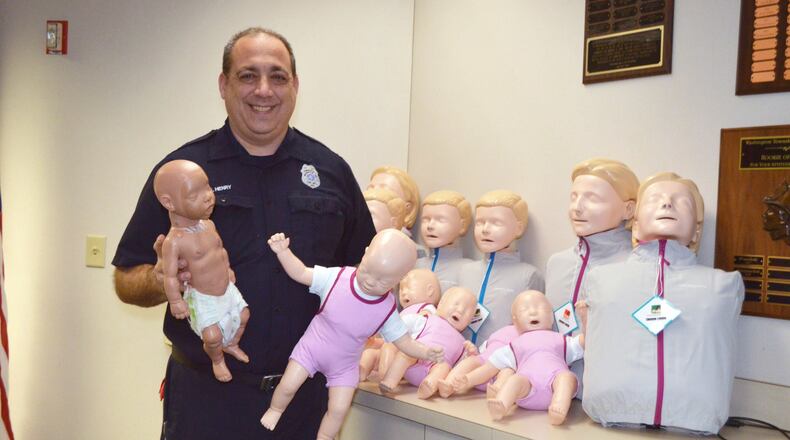A donation made by the Washington Twp. Firefighters Association made the acquisition of the new manikans possible. The shipment included 16 adult and child manikins that provide digital feedback and eight infant manikins that emit a click for tactile feedback.
“The new manikins will enhance training for both the general public and healthcare providers who sign up for our CPR and First-Aid training,” said Fire Chief Scott Kujawa, noting that studies show real-time feedback can improve the quality of CPR compressions.
Class members who use the digital manikins each have a small screen that displays the key components of CPR, including compression rate and depth, chest recoil, and the exchange of air. Instructors simultaneously view the results from a tablet or laptop.
MORE: Miracle at the Marathon: CPR, training save life
“The manikins give immediate feedback so that class members can track, measure and improve their skills. Instructors also can monitor the results to quickly and accurately assist students with their technique,” Kujawa said.
In addition to the manikins, the donation includes four training AEDs (automatic-external defibrillators), removable manikin faces, face shields and cleaning supplies.
Items will be put to use starting March 19 when the Heartsaver CPR & AED Course with First Aid is offered to the public. Details about CPR classes are at www.washingtontwp.org/cpr.
MORE: Here’s how much sleep you should get a night to avoid heart attacks according to new study
According to data from the American Heart Association, nearly 45 percent of out-of-hospital cardiac arrest victims survived when bystander CPR was administered.
The majority of cardiac arrests occurs at public settings (18.8 percent), mostly homes/residences (69.5%) and nursing homes (11.7%). More than 350,000 cardiac arrests occur outside of the hospital each year.
About 90 percent of cardiac arrest fatalities occur primarily because bystanders do not know how to start CPR or they don’t want to do something wrong, according to the American Heart Association.
About the Author
